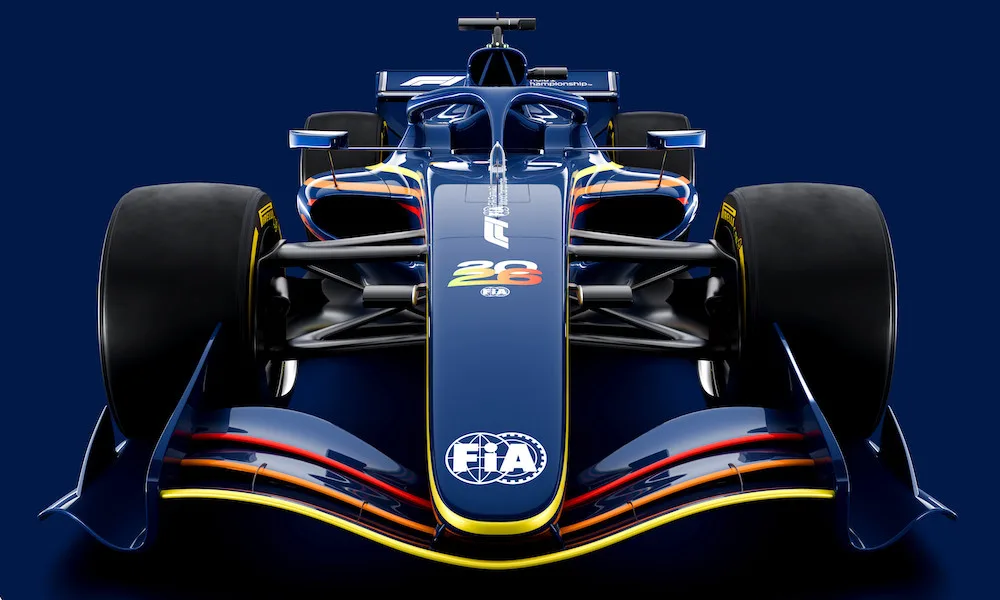The FIA has revealed several details of the 2026 Formula 1 technical regulations that will focus on a ‘nimble car’ concept with less downforce, drag and weight than current machinery.
After announcing the 2026 power unit regulations two years ago, the global motorsport federation has worked on the rest of Formula 1’s technical roadmap. The vision for 2026 is to improve ‘raceability and close racing’ according to an FIA statement. Downforce will be reduced by 30 per cent and drag by 55 per cent, as the rule makers seek to make it easier for cars to follow each other while minimising the impact of ‘dirty air’.
The chassis will be smaller and lighter than the current 2022 generation of Formula 1 cars. The maximum wheelbase has been shortened from 3600mm to 3400mm and width has slimmed from 2000mm to 1900mm. The maximum floor width will be reduced by 150mm. The FIA has confirmed a minimum weight of 768kg, down 30kg from today’s machinery. Tyre mass is set to be around 46kg, putting the car and driver weight at 722kg.
The 18-inch wheel size will remain unchanged, however tyre width will be reduced by 25mm on the front and 30mm on the rear. The goal is for grip loss to minimised.
On the aerodynamics side, there will be less reliance on generating downforce through ground effect, which was one of the pillars of the 2022 rules. From 2026, Formula 1 cars will have partially flat floors and a less effective diffuser, reducing teams’ reliance on stiff and low set-ups.
Formula 1 is also making big changes to its active aerodynamics. Cars have used a drag reduction system (DRS) as an overtaking aid since 2011, but from 2026 it will be used by all cars at all times. The revised active aero system will involve movable front and rear wings. It is designed to increase cornering speeds with the standard ‘Z-Mode’ deployed, while on the straights drivers will switch to an ‘X-Mode’ low-drag setting for optimised straight-line speed. The lower beam wing has been axed, while the rear wing is set to feature three elements. A two-element flap for the front wing’s active aero system will be fitted, while the front wing will be 100mm narrower than today.
The role of DRS as an overtaking tool will be assumed by the Manual Override system, which boosts the amount of electrical power for a chasing car. Electric power deployment of a leading car will taper off at 290km/h, reaching zero at 355km/h, whereas the chasing car will use the MOS to get…
Click Here to Read the Full Original Article at Racecar Engineering…

